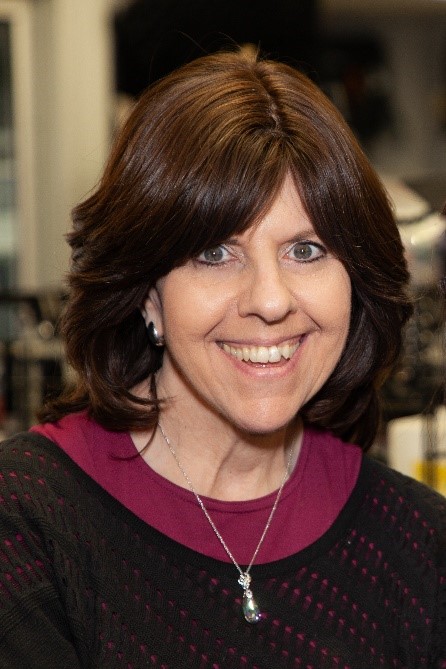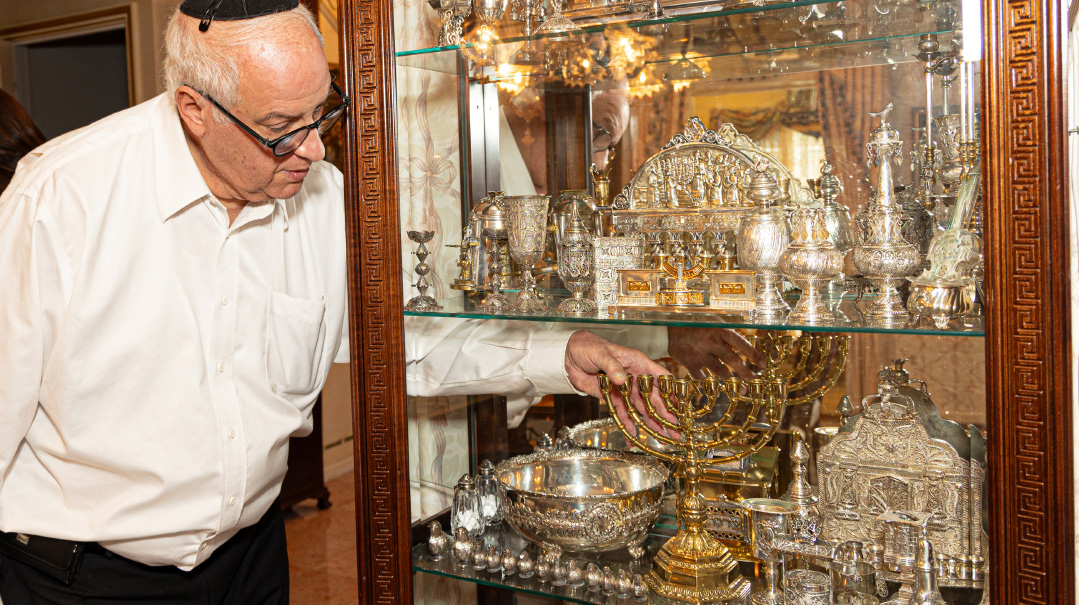In Every Generation

A Judaica collector's wine-stained treasures from a lost world

Photos: Esky Cook
You’d think the brick colonial home on this residential Baltimore block is just as regular as the others lining either side of the street — until you step inside. Then, your senses are accosted by an impressive private Judaica collection that bears witness to centuries of Jewish life and survival.
This isn’t really a museum, though; it’s Eli and Ronnie Schlossberg’s home. Eli is a Baltimore community activist, executive trustee of the Ahavas Yisrael tzedakah fund, president of the Castle Consulting Group that specializes in kosher and specialty food distribution in the US and Israel, and the author of The World of Orthodox Judaism and My Shtetl Baltimore. He’s also a Judaic art and silver collector, but we’ve come here to see some heirloom items even more precious to him than his collection of dozens of ornate silver pieces.
Because for all his collectors’ items, what makes all those efforts most worthy is his treasury of many priceless heirlooms that he tracks back to his grandparents and their German kehillos (William and Lani Goldschmidt of Limburg, and Emanuel and Bluma Schlossberg of Fuerthe). In a time when people were leaving their valuables behind as they fled for their lives before the onset of World War II, both the Goldschmidts and Schlossbergs were miraculously not only able to escape Germany before it was too late, they were even allowed to ship containers of their belongings to their eventual homes in America. Eli and his sister Aviva Sondhelm, a music teacher in Jerusalem’s Har Nof, inherited the collection from their parents, Fred and Greta Schlossberg — every item of which opens another door into a lost world.
Let There Be Light
As we exit the foyer, the first room we see is Eli Schlossberg’s large private library (although he’s not an official collector of old seforim and manuscripts). But it’s the two centerpieces suspended from the ceiling that catch our attention — brass lighting fixtures from a bygone era. Originally hung from the Goldschmidts’ ceiling in Limberg, Germany, the dining room chandelier used oil instead of wax candles (wax was used by the extremely wealthy). The Shabbos candelabra is also different from the Shabbos neiros commonly found in most homes, as residents of Limberg would hang it on a chain and fill the cups with wicks and oil, a fixture found in old Yerushalmi homes as well.
Oops! We could not locate your form.







